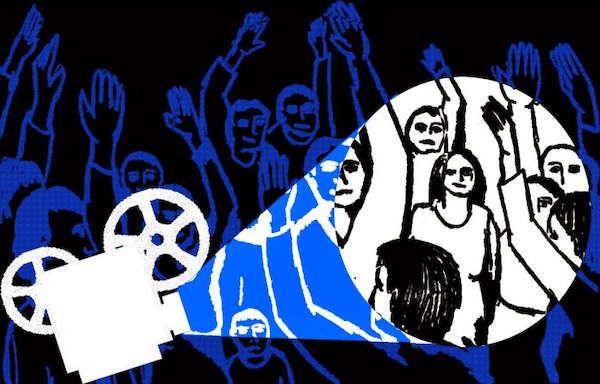Mind the spotlight: The ever-shifting stage of new UK theatre

How Political Correctness and Multimedia Experiments Are Reshaping Britain’s Dramatic Landscape.
Imagine it. You're sitting in a draughty little theatre foyer with a coffee that tastes suspiciously like burnt socks. You're here, apparently, to witness the next big thing in British theatre—some would say The Next Great Leap in stage artistry—while also attempting to avoid offending a crowd of self-declared “woke” theatregoers milling around the lobby. It’s all thoroughly modern, really: the place is buzzing, the cappuccino machine is steaming furiously, and someone’s blaring an experimental electronica soundtrack they’re keen to pitch for a future production.
And that’s precisely the point, isn’t it? Right now, new theatre in the UK feels like a half-finished jigsaw puzzle—crammed with possibility and ambition but occasionally missing that elusive piece. Let’s start with one of the most hotly debated topics: political correctness and the unstoppable wave of social-awareness. In days gone by (meaning just a few years ago), you might have had a playwright throw in a random slur or a casually offensive remark for shock value. Nowadays, entire productions are being reworked to ensure that no group is singled out unfairly—or at least that, if someone is going to be singled out, the script has a handy disclaimer citing historical context, guidance from sensitivity readers, and a workshop or two at the local arts council.
Depending on who you speak to, that’s either stifling or enlightening. One director I overheard recently was explaining how she spent as long consulting with cultural advisers as she did actually rehearsing scenes. It seems there’s now an advisory board for everything: gender representation, race portrayal, historical authenticity, even the brand of tea the stage manager chooses for the cast. The truth is, new writers know people are paying close attention—very vocal attention, at that. Audiences have opinions, and they’re not afraid to tweet them into the stratosphere if they sense something amiss.
Has it changed the tone of new British theatre? Absolutely. Is it necessarily a bad thing? Well, that depends on whether you believe increased accountability hampers creativity or propels it forward. Personally, I’ve seen some new plays that balanced fearlessness with genuine thoughtfulness. Then again, I’ve also seen productions that tiptoed around every potential pitfall so carefully, they ended up feeling like they were swaddled in bubble wrap—cautious to the point of being squeakily dull. Perhaps this is just a transitional stage while writers figure out how to navigate modern sensitivities without blunting their creative edge. Ideally, this heightened awareness will yield stories that resonate more deeply, rather than devolving into bland, by-committee scripts. Let’s hope the next generation of playwrights manages to add something bold and vital to the discussion, instead of going mute under the weight of potential Twitter storms.
Which brings us nicely to the next big talking point: the merging of traditional theatre with the relentless tide of film and audio. It’s no longer just about a few fancy stage lights; we’re talking full-blown cinematic experiences. Actors delivering live monologues in front of projected documentaries filmed half a world away. Experimental pieces where the audience wears headphones, hearing each character’s inner voice layered in real time like some surreal 3D audiobook.
Then again, let’s not get too haughty about our dear old stage. Theatre’s always been about spectacle, hasn’t it? Shakespeare had trapdoors and thunder sheets; the Victorians had gas lighting. Nowadays, we’ve got iPads, green screens, and backstage livestreams on Instagram. At its core, theatre is about crafting an immediate, unrepeatable experience—something you can’t simply pause and pick up later. For new writing in particular, these multimedia approaches can bring stories to life in a way that resonates with our hyperconnected reality. Rather than being overshadowed by West End behemoths with rotating carousels and flying chandeliers, new theatre-makers are using technology that’s more accessible and affordable. If you’ve got a halfway decent projector and a decent internet connection, you can conjure up visuals that make your audience feel they’re witnessing something far grander than a purely spoken piece might allow.
But, much like our tussle with political correctness, there’s a delicate balance to be struck. When a production leans too heavily on film, you can’t help wondering if you’re seeing a play or just a second-rate Netflix viewing party. I’ll forever cherish the rawness of real voices reverberating in a tiny theatre, and the authentic squeak of worn-out floorboards beneath the actors’ feet. There’s a special kind of magic in live performance that no multi-angle camera setup can replicate. The trick is ensuring these tech flourishes remain an enhancement rather than a replacement—an extension of the craft, not the entire show.
So, is new British theatre alive and well? In a word, yes—very much so. In fact, it’s borderline hyperactive. Writers are finding fresh ways to explore our modern world: sometimes creeping around sensitive issues on tiptoe, sometimes barging in brandishing a metaphorical loudhailer. Directors are blending film, audio, and social media into experiences that feel at once epic and intimately local. And let’s not forget the audiences, who are more diverse, more outspoken, and more than willing to transform a furious Twitter rant into the catalyst for a sold-out run.
Granted, some people still pine for the days of pure, unfiltered drama, before you had to worry if you’d inadvertently offended half the front row or if the set resembled a cardboard box that had seen better days. But times change, and so do tastes and art forms. If theatre is about capturing life as it is—or as we’d like it to be—then it stands to reason it should embody the noise and nuance of modern Britain, including all the disclaimers, headphone-laden immersion, and perhaps a timely smartphone cameo or two.
Ah, modern theatre: if it were any more up-to-date, it’d come with its own app and a companion group chat. But that’s precisely why we keep showing up—because it’s this constant reinvention that keeps the spotlight shining.
